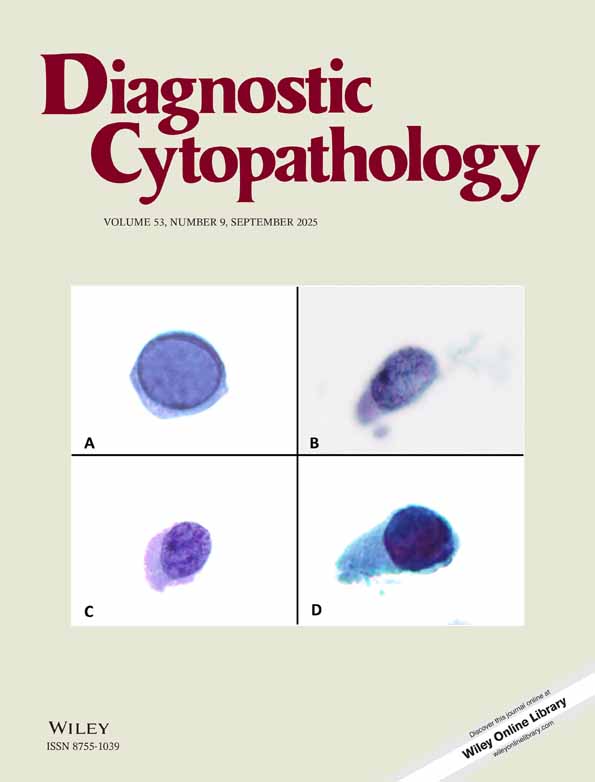Improvement of the Mair scoring system using structural equations modeling for classifying the diagnostic adequacy of cytology material from thyroid lesions
Abstract
The scoring system developed by Mair et al. (Acta Cytol 1989;33:809–813) is frequently used to grade the quality of cytology smears. Using a one-factor analytic structural equations model, we demonstrate that the errors in measurement of the parameters used in the Mair scoring system are highly and significantly correlated. We recommend the use of either a multiplicative scoring system, using linear scores, or an additive scoring system, using exponential scores, to correct for the correlated errors. We suggest that the 0, 1, and 2 points used in the Mair scoring system be replaced by 1, 2, and 4, respectively. Using data on fine-needle biopsies of 200 thyroid lesions by both fine-needle aspiration (FNA) and fine-needle capillary sampling (FNC), we demonstrate that our modification of the Mair scoring system is more sensitive and more consistent with the structural equations model. Therefore, we recommend that the modified Mair scoring system be used for classifying the diagnostic adequacy of cytology smears. Diagn. Cytopathol. 1999;21:387–393. © 1999 Wiley-Liss, Inc.




